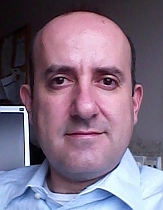
Koray Kilic
Radiation dose in diagnostic work-up has always been an important topic in our radiology department as well as in other radiology societies. We make every effort to decrease the dose imparted to patients by using bismuth shields, automatic tube current modulation, low-kVp methods for CT angiography, low-dose examinations where applicable (urinary stone, paranasal sinuses, pulmonary nodule follow-up etc), stratified dose protocols according to age/weight, and by decreasing unnecessary CT requests.
Being one of the recent radiation dose-reduction methods, adaptive statistical iterative reconstruction (ASIR) captured our attention. It has been 3 years since we implemented ASIR in all of our CT protocols. As we reconstruct images, both with filtered back-projection (FBP) alone and an ASIR/FBP blend for each exam, we have been able to compare the image quality both quantitatively and qualitatively.
We found that though the noise reduction was not homogeneous throughout the image plane, we could manage to decrease the dose in the adult head CT examination by using ASIR. The pediatric patient group benefits more from ASIR than adults as they are more vulnerable to side effects of radiation. At ECR’12, we also presented our results in pediatric head CT, which are in concordance with our previous study.
Second-generation iterative reconstruction methods that clear noise more efficiently from the image are now on the market. With these methods we hope to decrease the dose further.
Read this article at AJNR.org . . .
If you liked this article, you may also like:
Patient Radiation Dose Management in the Follow-Up of Potential Skin Injuries in Neuroradiology